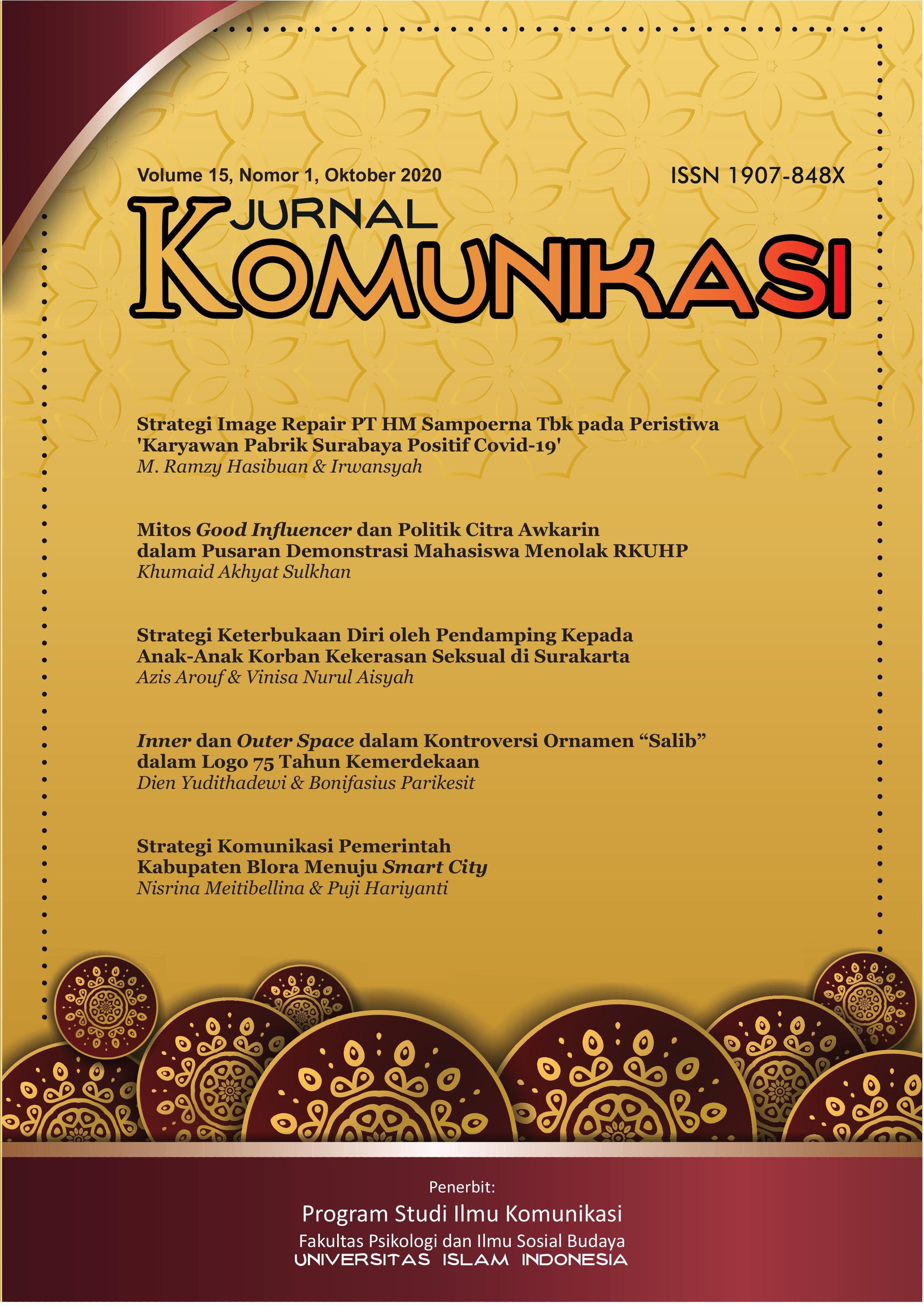Main Article Content
Abstract
The purpose of this research is to understanding the strategy of self-disclosure conducted by companion of Yayasan Kakak Surakarta to children’s sexual abuse victim. Self-disclosure by companion to children’s sexual abuse victim be used to resolve case of children’s sexual abuse and rehabilitations process of victim. The type of research is descriptive and qualitative with determine the informant use purpossive sampling. The technique data collection use indepth-interview and observation. Data validity using data triangulation. The results of this research is companion from Kakak Foundation Surakarta has different strategy at each area self-disclosure. Open area, companion use strategy that collaboration with another affairs and sharing tasks between companions from Kakak Foundation based on victim data. Hidden area companion use empathy to rising up the confidence and give pleasent feel for victim to reveal the sexual abuse incident. Blind area companion use strategy give powerfull respons to children’ sexual abuse victim in order to tell the information that in point of fact they don’t know about. Meanwhile in unknown area constitute area that can not be reveal because that is about the victim destiny in the future after the case resolved.
Article Details
Authors who publish with this journal agree to the following terms:
- Authors retain copyright and grant the journal right of first publication with the work simultaneously licensed under a Creative Commons Attribution License that allows others to share the work with an acknowledgement of the work's authorship and initial publication in this journal.
- Authors are able to enter into separate, additional contractual arrangements for the non-exclusive distribution of the journal's published version of the work (e.g., post it to an institutional repository or publish it in a book), with an acknowledgement of its initial publication in this journal.
- Authors are permitted and encouraged to post their work online (e.g., in institutional repositories or on their website) prior to and during the submission process, as it can lead to productive exchanges, as well as earlier and greater citation of published work (See The Effect of Open Access).




